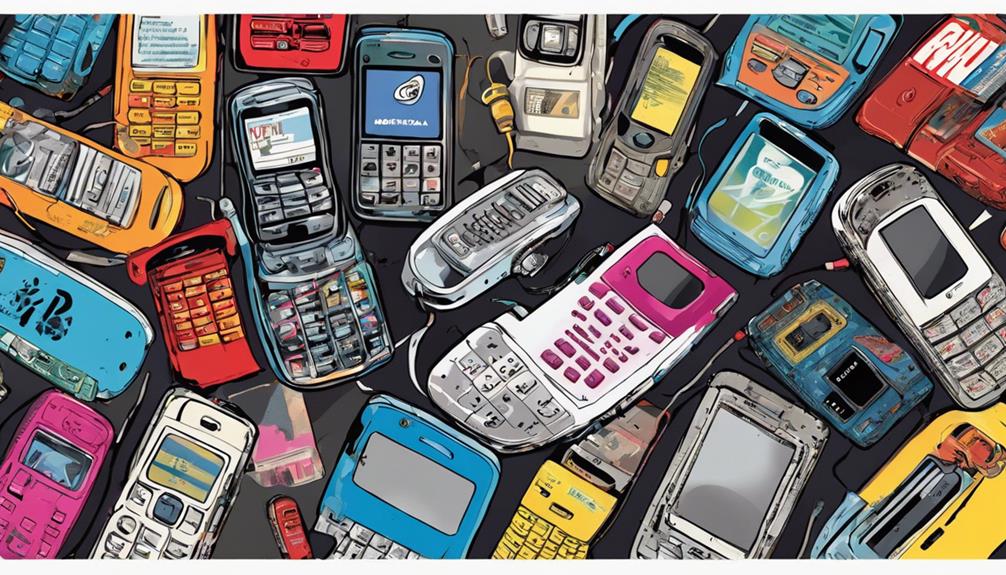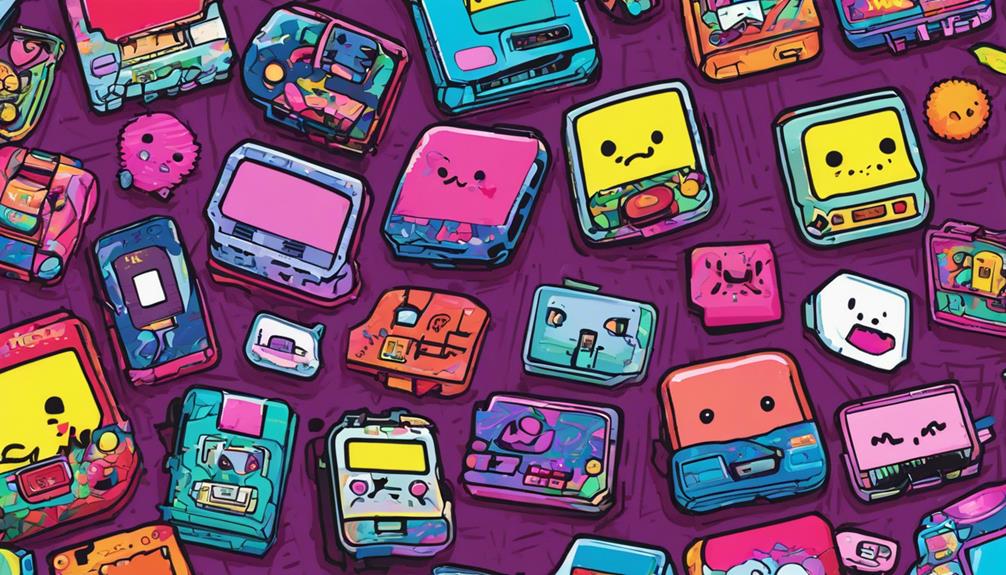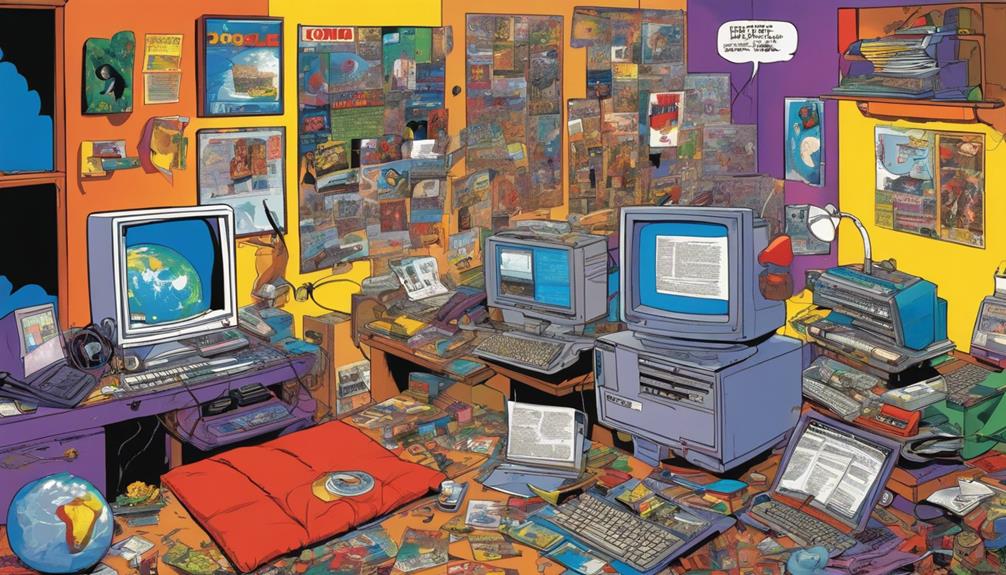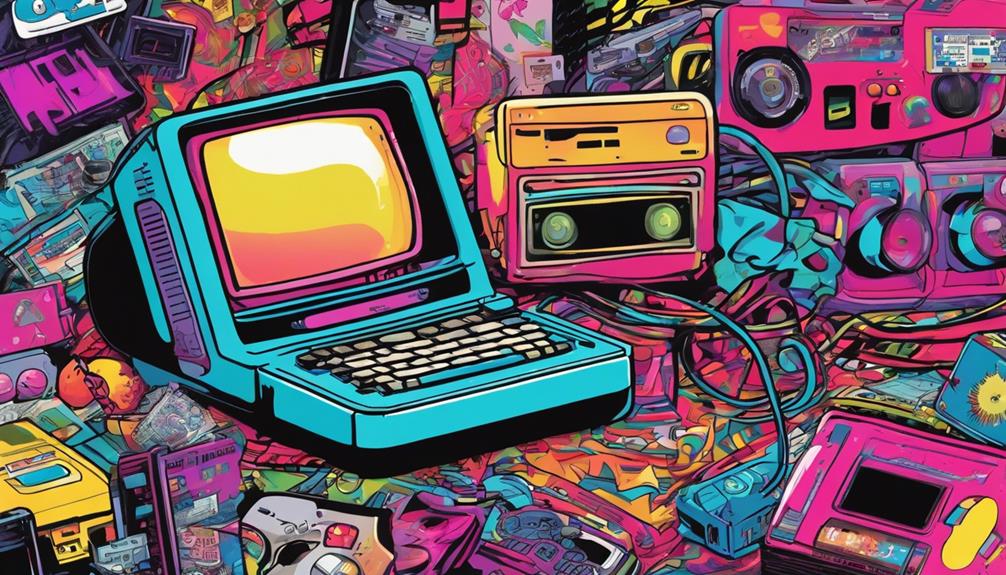The 1990s brought innovative breakthroughs that changed daily life. You've got Adobe Photoshop, which revolutionized digital art and design. The rise of Linux made powerful computing accessible to everyone, fostering a collaborative spirit. Text messaging transformed communication, allowing quick and concise exchanges. Mobile phones evolved into sleek devices, paving the way for smartphones. The gaming world exploded with the PlayStation, introducing immersive 3D experiences. Even Tamagotchis captured imaginations, teaching responsibility through virtual pets. Finally, Google redefined how you search for information online. These innovations laid the groundwork for our modern world, and there's much more to discover.
Key Takeaways
- Adobe Photoshop revolutionized digital image editing, becoming the industry standard with features like layers and filters that expanded graphic design possibilities.
- The emergence of Linux as an open-source operating system fostered collaboration and innovation, making powerful computing widely accessible and cost-effective.
- The introduction of text messaging in 1992 transformed communication, allowing for concise exchanges and laying the groundwork for real-time conversations.
- The release of the Playstation in 1994 marked a gaming revolution with immersive 3D graphics, shaping interactive entertainment and appealing to diverse audiences.
Adobe Photoshop Revolution
How did Adobe Photoshop, launched in 1990, transform the world of digital image editing and graphic design?
It brought unprecedented capabilities to artists and photographers, allowing you to manipulate images in ways that were previously unimaginable.
With features like layers, filters, and selection tools, Photoshop enabled you to enhance photos, create stunning graphics, and explore your creativity.
You could easily correct flaws, adjust colors, and combine multiple images, making digital artistry accessible to everyone.
This software quickly became the industry standard, influencing not just professional designers but also hobbyists.
As you embraced this powerful tool, the boundaries of graphic design expanded, paving the way for the visually rich digital content we interact with today.
The Rise of Linux

The rise of Linux in the early 1990s marked a pivotal moment in computing, offering a robust open-source operating system that transformed how software was developed and shared. You might find it fascinating that Linux not only allowed programmers to modify and distribute code freely but also fostered a community-driven approach to software creation.
Here are three key impacts of Linux:
- Collaboration: It encouraged developers worldwide to work together, sharing knowledge and resources.
- Cost Efficiency: By being free, it made powerful computing accessible to individuals and organizations alike.
- Innovation: The open-source model led to rapid advancements, paving the way for new technologies and applications.
Linux's influence continues to shape the tech landscape today, showcasing the power of community and open collaboration.
The Birth of Text Messaging

In 1992, text messaging made its debut, forever changing the way you communicate on mobile devices. The first text message, sent by Neil Papworth to Richard Jarvis, simply read 'Merry Christmas.' This marked the beginning of a revolution in communication.
With the introduction of the Nokia 1011, the first mobile phone to support SMS, texting quickly gained popularity. You could now send short, concise messages instead of making voice calls, making communication more efficient.
Text messaging laid the groundwork for modern mobile communication, allowing for real-time conversations without the need for face-to-face interactions. It opened the door to a new era, where quick exchanges became part of everyday life, fundamentally altering how you connect with others.
Evolution of Mobile Phones

Since the early 1990s, mobile phones have undergone a remarkable transformation, evolving from bulky devices to sleek, user-friendly gadgets that fit comfortably in your pocket. You've seen this evolution firsthand, with each new model bringing enhanced features and improved design.
Here are three key milestones in this journey:
- Nokia 1011 (1994): The first mass-produced GSM mobile phone, setting a new standard for portability.
- Text Messaging (1992): Revolutionized communication, allowing you to send quick messages effortlessly.
- Smartphones (Late 1990s): Introduced advanced functionalities like internet access, paving the way for today's multifunctional devices.
These innovations have dramatically changed how you connect and communicate, making mobile phones an essential part of your daily life.
Gaming Revolution With Playstation

Revolutionizing the gaming landscape, the Sony PlayStation introduced players to immersive 3D graphics and CD-ROM technology, forever changing how you experience video games.
Released in 1994, it marked a significant shift from 2D gameplay to rich, dynamic environments. You could finally explore vast worlds and engage in complex narratives that captivated your imagination.
The PlayStation's user-friendly design and diverse game library appealed to both casual and hardcore gamers, making it a household name.
Iconic titles like 'Final Fantasy VII' and 'Metal Gear Solid' showcased the console's capabilities, setting new standards for storytelling and gameplay.
This innovation not only defined a generation of gaming but also laid the foundation for the future of interactive entertainment.
The Tamagotchi Phenomenon

Tamagotchis captured the hearts of millions, turning virtual pet care into a cultural sensation that encouraged responsibility and engagement among children. These pocket-sized digital pets required constant attention, making kids feel like caregivers. You learned valuable lessons while having fun, and it became a social experience as friends compared their Tamagotchis.
Here are three key aspects of the Tamagotchi phenomenon:
- Responsibility: Kids learned to care for their virtual pets, understanding the importance of nurturing and attention.
- Community: The shared experience of Tamagotchi ownership fostered connections among peers, leading to discussions and friendships.
- Technology Integration: Tamagotchis blended play with technology, paving the way for future interactive toys and gadgets.
Google Changes the Internet

The rise of Google in the late 1990s transformed how you search for information online, making the internet more accessible and user-friendly. With its innovative algorithm, you could find relevant information faster than ever before. Google's minimalist design and speed set it apart from other search engines, creating a seamless experience.
Here's a quick comparison of Google with earlier search engines:
| Feature | Other Search Engines | |
|---|---|---|
| Search Algorithm | PageRank | Keyword-based |
| User Interface | Minimalist | Cluttered |
| Speed | Lightning-fast | Slower |
How Did Innovations in the 1990s Impact Small Habits and Daily Life?
The innovations in the 1990s had a profound impact on small habits shape lives and daily life. The introduction of the internet, cell phones, and email changed the way people communicated, worked, and socialized. These technological advancements also influenced how people shopped, consumed media, and accessed information, ultimately shaping their daily routines and habits.
Conclusion
As you reflect on the dazzling decade of the 1990s, it's clear that these pioneering innovations paved the path for progress.
From the vibrant visuals of Adobe Photoshop to the enchanting charm of Tamagotchis, each breakthrough brought a burst of excitement and change.
You've witnessed a world transformed by technology, communication, and creativity.
Embrace the echoes of this era, where every invention ignited imaginations and inspired the future, leaving a lasting legacy that still resonates today.









